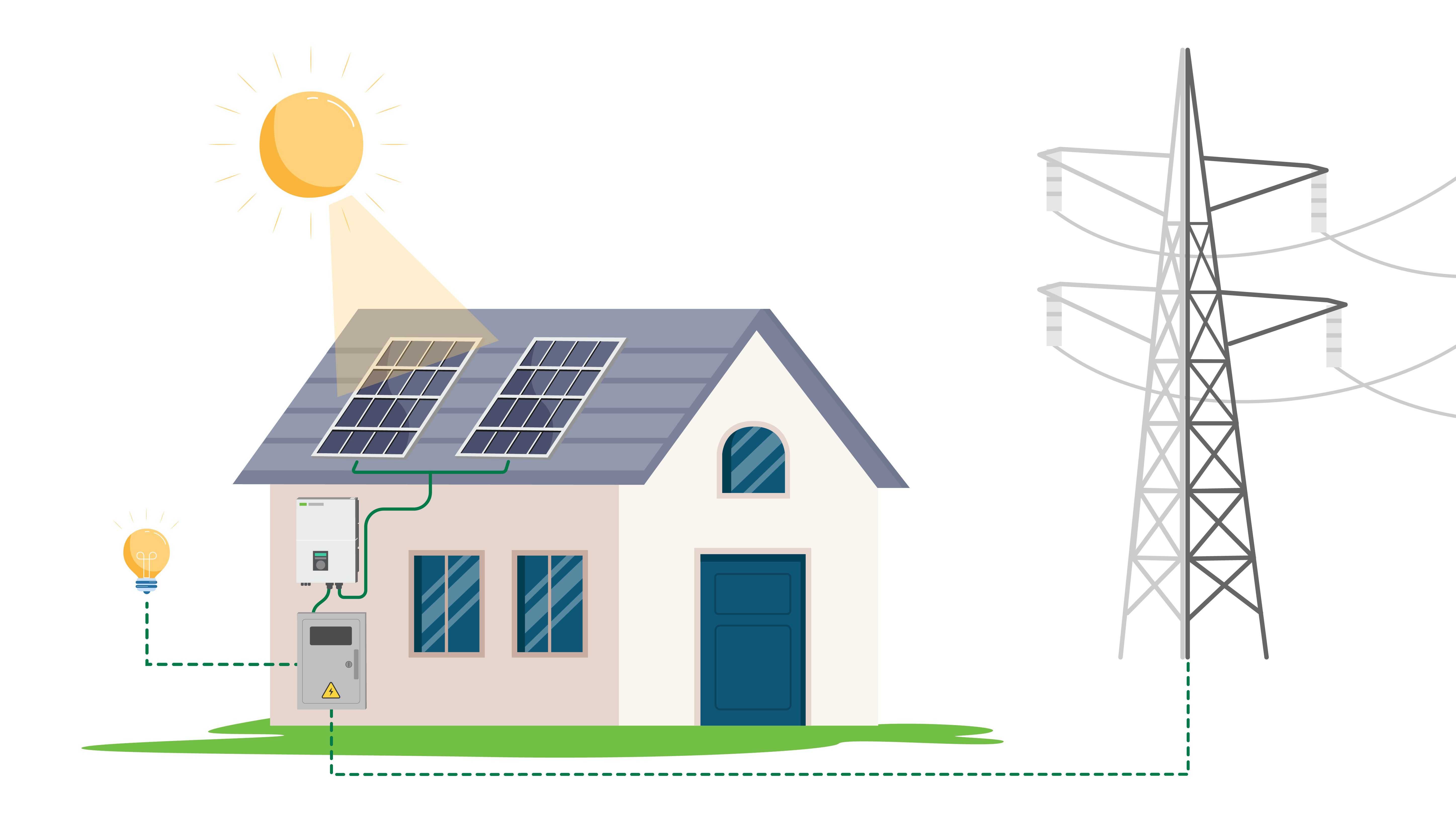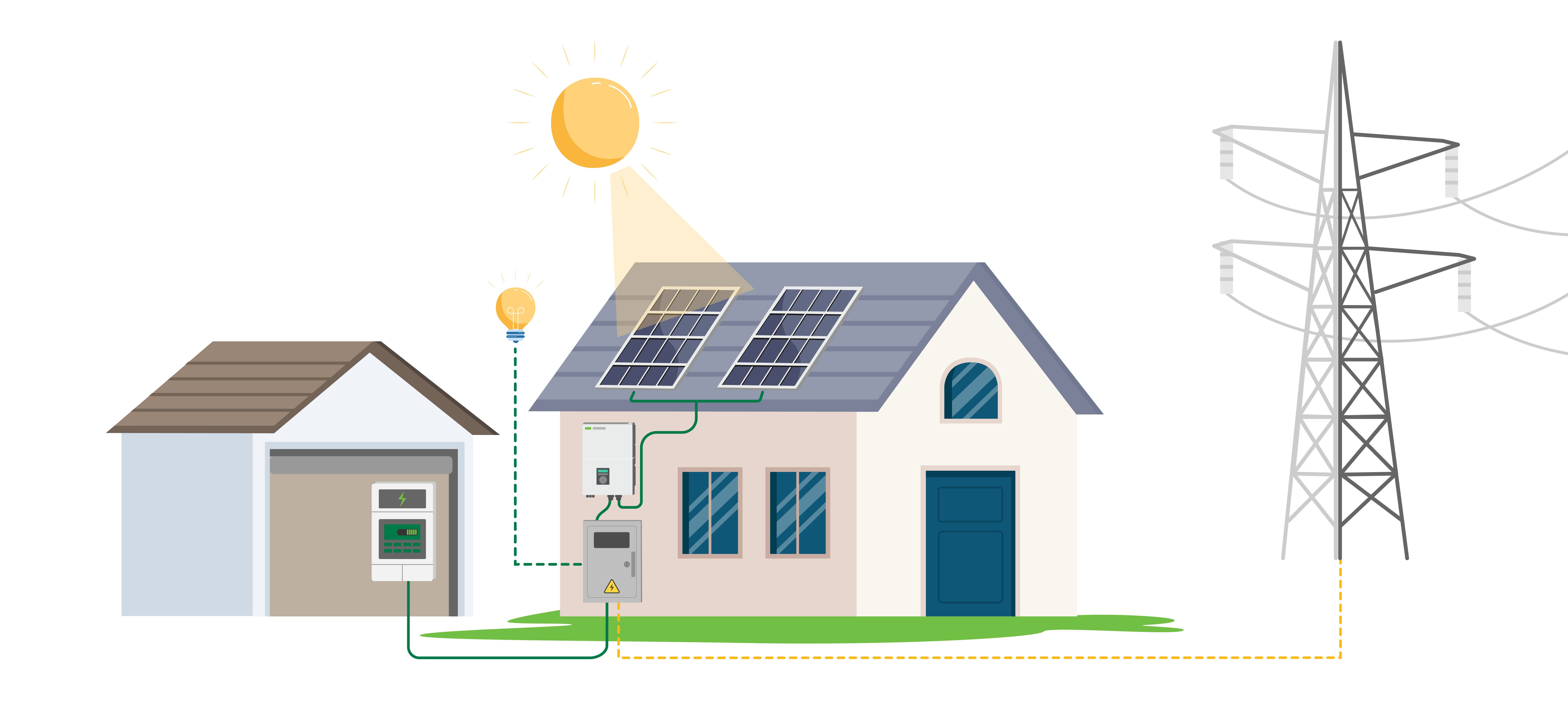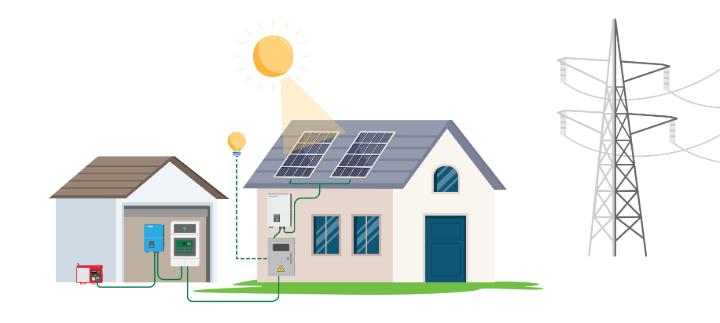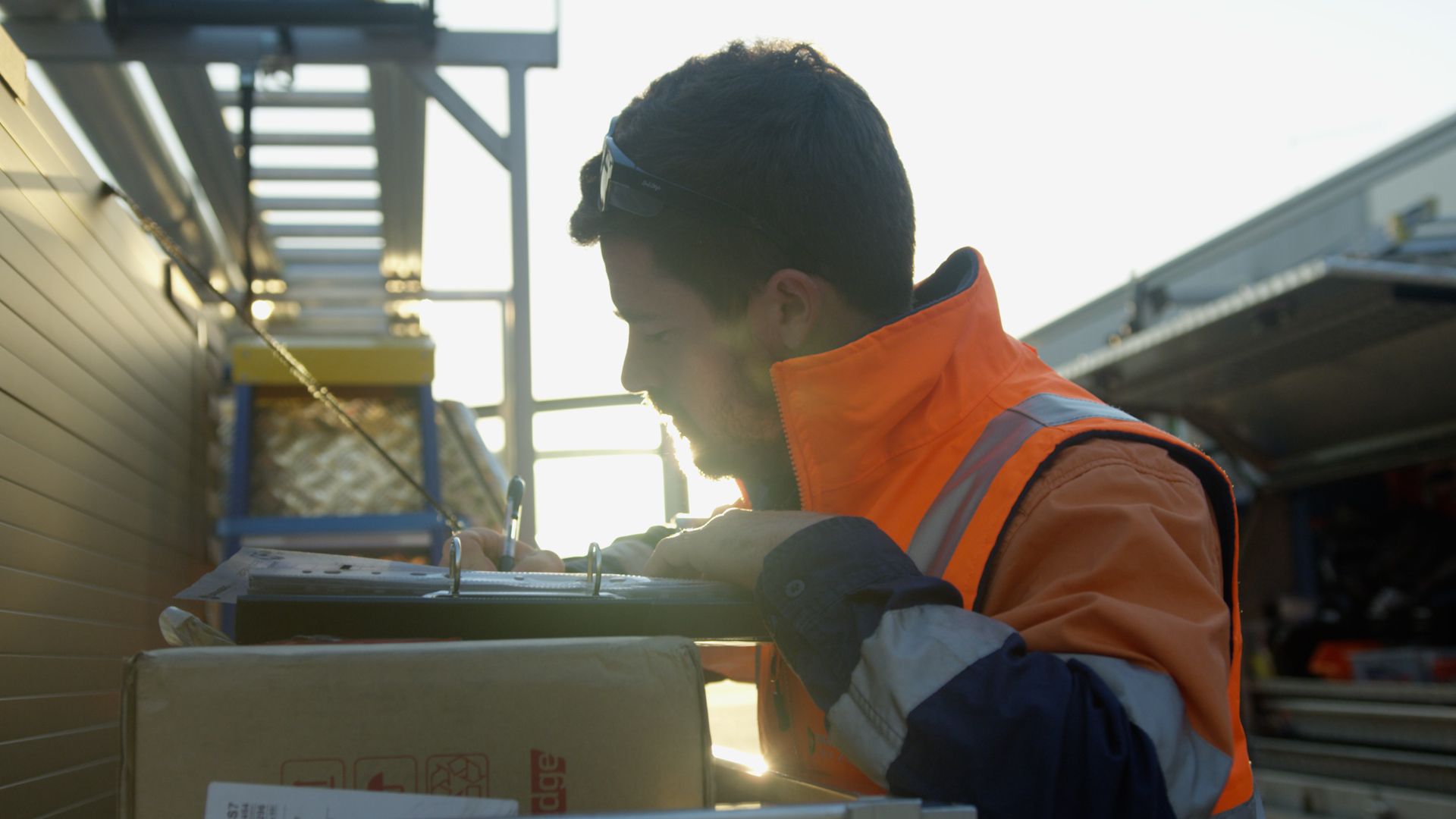One common question we receive as Queensland’s most trusted solar installer is, “Will my solar still work during a power outage? Will I lose power like my neighbours during a blackout, or will my solar system keep my lights on?”
These are important questions, and while we wish we could respond with a simple yes or no, there is some complexity in the answer. There are a few factors that will determine whether your solar energy system will continue to generate electricity to your property if a blackout occurs.
Before delving in, it’s critical to understand how solar energy systems work and how power from the sun is converted into usable electricity for your home.
Solar energy is the product of photovoltaic cells (PV) converting sunlight into electricity. The PV cells in solar panels capture sunlight as DC (direct current) electricity. The DC electricity is sent to your solar inverter which converts it into AC (alternating current) electricity, which is used to power your business or home.

As has been the way for as long as power plants have been running, all houses are connected to the grid (unless you have an Off-Grid energy system, which is becoming more popular). Most solar systems will supplement the energy provided by those power plants, to some varying degree.
Depending on the type of solar system you have installed, your connection and reliance on the “Grid” can vary. The dependence of your solar system on the Grid will also determine how much of your excess energy gets sent back to the grid plants and how much income you can get from that energy.
A grid power outage can affect the operation of your solar. The ‘Grid’ is the term used to refer to the complex electricity distribution network across Australia. It transfers electricity from major power plants via electricity lines into grid-connected homes and businesses.
Of course, one power plant can’t power the whole nation… there are many power plants all over Australia that provide power to different regions and suburbs, and when one of these power plants is compromised, it can result in an entire suburb losing their grid connection. Hence, a blackout.
Given some context, we can now understand how solar energy systems function during a power blackout.
Will I Still Have Power if There’s a Blackout?
For simplicity's sake, it is highly likely that if your suburb or neighbours lose power, you will also lose power even if you have a solar system. But, there’s a bit more to it than that.
Whether or not you lose power depends on the type of solar system you have installed and how the system is connected (or not connected) to external power sources. In most cases, solar systems are designed to disconnect the power supply during a blackout, meaning that your solar system switches off automatically.
A grid power outage can affect the operation of your solar. The ‘Grid’ is the term used to refer to the complex electricity distribution network across Australia. It transfers electricity from major power plants via electricity lines into grid-connected homes and businesses.
It is a common misconception that standard solar energy systems will continue to provide off-grid power during a blackout in order to keep your lights on. This is not the case - most solar systems are grid-connected, and this doesn’t change when you experience a blackout. So, unless you have an off-grid or hybrid system installed, you are going to lose power just like your neighbours.
Solar System Connection Types and What it Means For You
When it comes down to it, there are 3 main solar energy systems that you can have installed in your home or business. You’ll either have a Grid-Tied System, a Solar Hybrid System or an Off-Grid System. The main difference between each of these systems, other than the components, is how connected your system is to the Grid and your reliance on energy supplied from the Grid.
Grid-Tied Solar System
As its name suggests, a Grid-Tied solar system is connected to the local energy grid and will consist of only solar panels and a grid-tied inverter. This system connects back to the Grid to offset the power supply from your solar system. It works to prevent the loss of excess generated energy or supplement your energy consumption depending on the capability of the system installed, your individual energy draw and the day-to-day weather conditions.

During the times when your panels are producing more energy than required, your system will send the energy not used by the home back to the Grid. Not for free of course, your energy provider will pay you for the excess solar you send to the Grid with what’s known as a Feed-In Tariff. This rate is different per state and for each energy retailer but you’ll be compensated for the energy you give them.
Alternatively, during times when the weather is bad or your energy consumption is high, your solar system may only offset a portion of the electricity usage of your business or home. A Grid-Tied system will use the connection to the Grid to supplement the extra energy demand so that you can continue to power all your appliances.
Solar Hybrid System
A Hybrid solar system is the perfect middle ground between a Grid-Tied and Off-Grid system. Much like a Grid-Tied system, this system is connected to the conventional grid, but with an additional bonus. A Hybrid solar system includes a solar battery, giving you all the benefits of energy storage, and will usually be sized to provide enough power to your property throughout the night when energy isn’t being generated by the panels.

These systems are designed to provide solar-generated energy to your home first, then supply power from the batteries and finally provide energy from the Grid as a last resort. This will allow you to be mostly self-sustaining, while also maintaining the backup resource of the Grid if needed.
This system, similarly to the Grid-Tied, will also send any excess generated energy to the Grid, but only once your batteries are full. So you can still earn credits from any energy sent to the Grid, but you can harness most of that excess to use yourself first.
Off-Grid Solar System (Stand Alone System)
Finally, we have Off-Grid systems. Off-Grid systems are exactly as their name suggests, completely disconnected from the conventional Grid. These systems run completely independently of traditional electricity connections, so need to consist of specialised components on site. In addition to the solar panels and solar inverter required for solar power generation, an Off-Grid system will also require a battery bank, a battery inverter as well as a backup generator.
As these systems are designed to provide all your energy needs, even when solar production decreases (i.e. shorter winter days, cloudy/stormy days and overnight), you’ll usually require a larger solar array to generate enough electricity, and an equally large battery bank to store it.

See a more in-depth breakdown of the solar system types in this article The Key Differences Between Grid Tied, Off-Grid and Solar Hybrid Systems
Solar System Connection Types and What it Means For You
So, we know that grid-tied solar systems are designed to switch off during a power outage… but why is that the case? In Australia, it comes down to health and safety.
Let’s say a storm has rolled in and a tree is blown into a powerline. The damage has compromised the line’s power supply and an entire suburb has lost power to the grid. To keep the electricians safe from live electricity as they work to rectify the powerline, all power connected to the line must remain switched off. This includes outbound grid electricity from the plant and excess solar energy from homes being sent to the grid.
Theoretically, your grid-tied solar system could remain operational in the event of a grid outage, but it never will. It is programmed by your solar installer and the DNSP to automatically disconnect during a blackout so that no excess electricity from your solar system is sent to the grid.
So, if your system is grid-connected and you experience a blackout, your panels will immediately stop generating energy, your inverter will stop converting it to electricity, and your system will turn off completely.
The only way around this is to have a solar energy system with battery storage and an inverter that allows you to isolate power from the grid. Having a battery will allow you to use any stored solar power during a blackout (provided your inverter and battery has the capability).
There has been a recent introduction of ‘battery-less inverters’ which allow for solar power usage without a battery. This is shown in Fronius’s Gen24 Plus inverter with their PV Point capability. This function essentially allows any solar energy generated to power a small load in the home directly when the grid is disconnected. While this is a good short-term solution, investing in a solar battery is the only guarantee of reliable energy during a blackout.

Most solar batteries now come with the backup feature (known as ‘islanding') which separates the grid supply from the house and allows any stored excess solar energy to power the home instead of being exported to the grid.
With solar and battery systems, you can opt to have a whole-of-home backup, where all electrical appliances and fixtures can draw power from the battery bank when required, or you can isolate certain circuits to only power essential appliances, such as fridges or lights, for an essential load backup.
It is important to remember that your solar battery system will be running on a limited power supply, as it will only be able to use as much power as is stored. This just means that you should carefully consider how much battery storage you require by tallying your “blackout necessities” to ensure you have enough power to keep them running.
It is also important to note that solar batteries are not uninterruptible power supplies and are not reliable for those who depend on essential medical equipment. This equipment will need to be powered by something like a backup generator or moved to a hospital running on medical-level backup generators or even a different grid system.
How Do I Know if I Need Backup Power Options?
When looking to install a solar system (or if you have an existing system without battery storage) it is essential to consider how important it is to have a backup power supply for your household, and especially how important it is to you that the backup power is from a renewable/sustainable source. Some questions to consider are:
- Is my neighbourhood in an area that is prone to storms and/or bushfires?
- Are there essential appliances I would like to run during a blackout, such as lights, a fridge, or an internet modem?
- Do I feel comfortable with my current situation in the event of a blackout?
- Is my neighbourhood prone to blackouts and do they last for an extended period of time?
Regardless of whether you have a Grid-Tied, Hybrid or Off-Grid System, having a solar and battery system will be the only way to run your solar energy during a blackout. Batteries such as the Tesla Powerwall are backup power systems that can provide energy to your home during power outages. The Tesla Powerwall, designed to work in conjunction with solar energy systems, can provide up to 5kW of continuous power and has 13.5kWh of usable energy. This is enough to run most average residential homes throughout the night.

Click here to learn more about Tesla Powerwall and to check out more batteries that offer backup power.
It’s also important to note that not every inverter on the market is going to allow you to isolate your power supply from the grid. In the event of a blackout, it’s essential that your whole system is able to work together seamlessly to provide backup power. It’s critical you consult a trusted solar installer who can properly design your system based on your individual needs and energy goals, and provide components to suit.
There are a few different types of inverters on the market which offer varying capabilities in terms of backup power supply. While a standard grid-tied inverter converts solar energy to usable household power, it doesn't allow you to recharge your solar battery during the blackout period, even if you’ve been using stored power.
Hybrid inverters, such as the Fronius Gen24 Plus, give you control over both your panels and the battery and will allow you to recharge the solar batteries even in blackout mode. This is the most steadfast way of keeping your home powered even during prolonged power outages.
What to do in the Event of a Power Outage When You Have Solar
If you have a solar installation (or even if you don’t) there are a few things you can do to stay safe and conserve energy during a power outage:
- Be very cautious of using any fire-based light source such as candles or lanterns as they are a potential hazard. This is especially important if the outage has been caused by a natural disaster that is still ongoing. It is recommended to use a battery-power light source such as battery lamps, flash lights and night lights.
- Do not try to heat your home with an oven or stove top. This is a major hazard, especially if your stove top is older and/or gas-heated; it could cause a number of fatal risks including gas inhalation or a gas-fueled fire explosion.
- Minimise opening the fridge or freezer door. Each time you open the door the stored cool air escapes and the appliance has to work overtime to keep the fridge cool.
- Before a power outage occurs make sure to have an emergency kit and plan prepared. Your kit should include batteries, canned food, bottled water, first-aid kits, flashlights and any possible necessary items for you or your family’s medical conditions. Talk to all the occupants of your home about an emergency plan in the case of a power outage so everyone can know what they need to so should the time come.
Solar Will Only Save You Money and Perform as Promised When Installed by a Reputable and Long-Standing Installer
Always choose a solar installer that has been trading for at least 10-15 years. A long-standing installer will be able to honour their warranties and service guarantees. A ‘solar orphan’ is someone whose installer has fallen out of business and thus has no points of contact for warranty claims or system support (unfortunately, this happens a lot more than you may think!)
Your solar installer should also complete a site inspection and analysis of your personal energy needs, to design a system that is most suited to your energy goals. On-site inspections are preferable, as this will help to avoid any hidden fees or additional costs that may be incurred come the day of installation (as pricing is always subject to inspection).
In summary, the most important things to look for when selecting an installer are evidence of customer testimonials focused on reliability and honesty, a high standard of workmanship, warranty periods, and quality components.

Springers Solar | Queensland's Most Experienced Solar Installer
Springers Solar provides quality components with proven performance, backed by industry-leading warranties, and dedicated after-sales support. Thousands of satisfied customers over more than 23 years of operation make Springers Solar one of the most established and experienced solar companies in Australia.
Springers Solar has received multiple awards for design and installation and is a certified/preferred installer for a large range of solar panel, inverter, and solar battery manufacturers, including Tesla, REC, and SolarEdge.
Our dedicated in-house team of electrical engineers, project managers, solar PV designers, solar installers and electricians work closely with you before, during, and long after your project is completed. Springers Solar offers an industry-leading 10-year workmanship warranty which is a testament to our qualified staff and offers you outstanding value and peace of mind.
Contact us about anything related to our services using the form below.
We'll get back to you as soon as possible.
Will My Solar Still Work During a Power Outage?